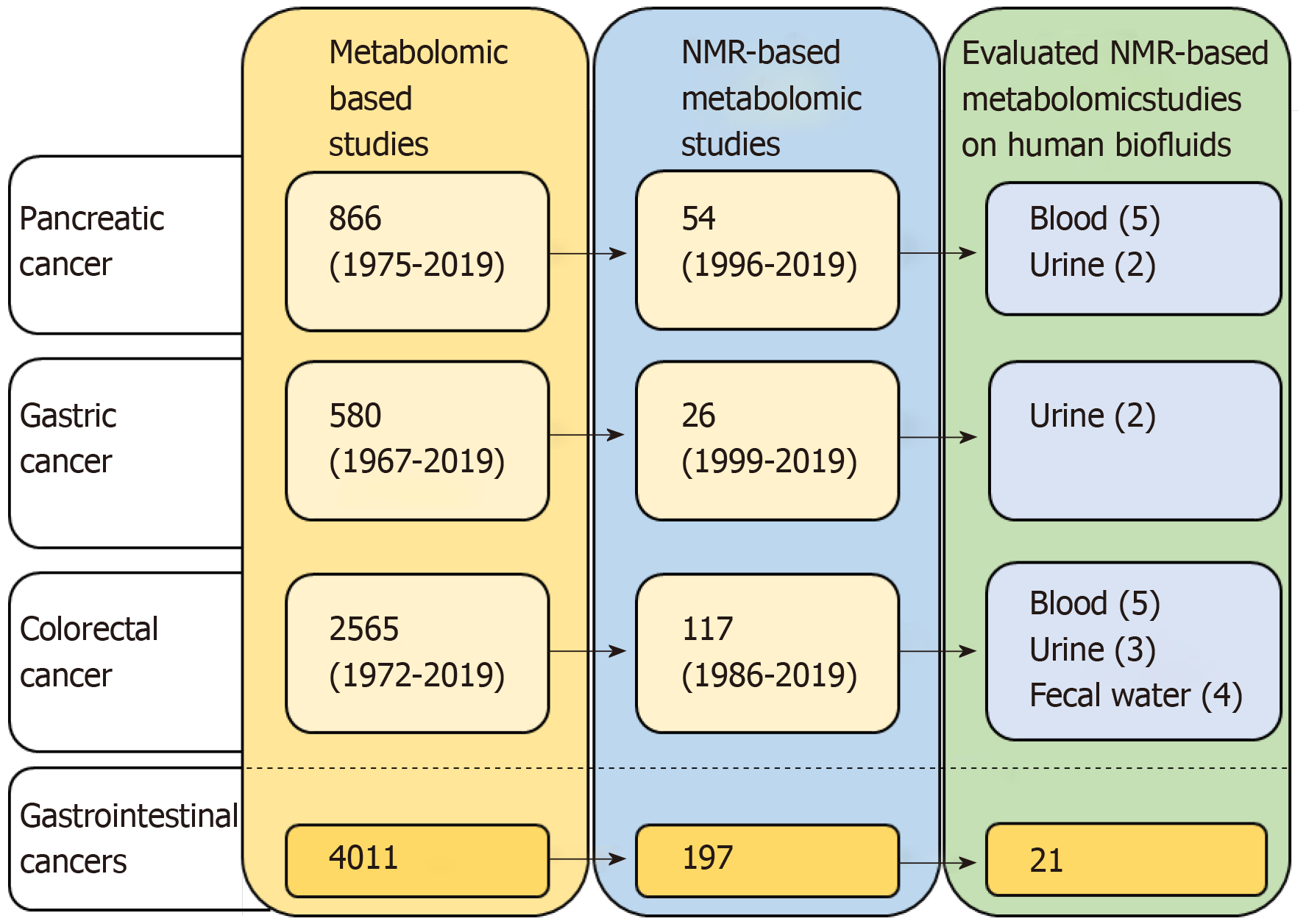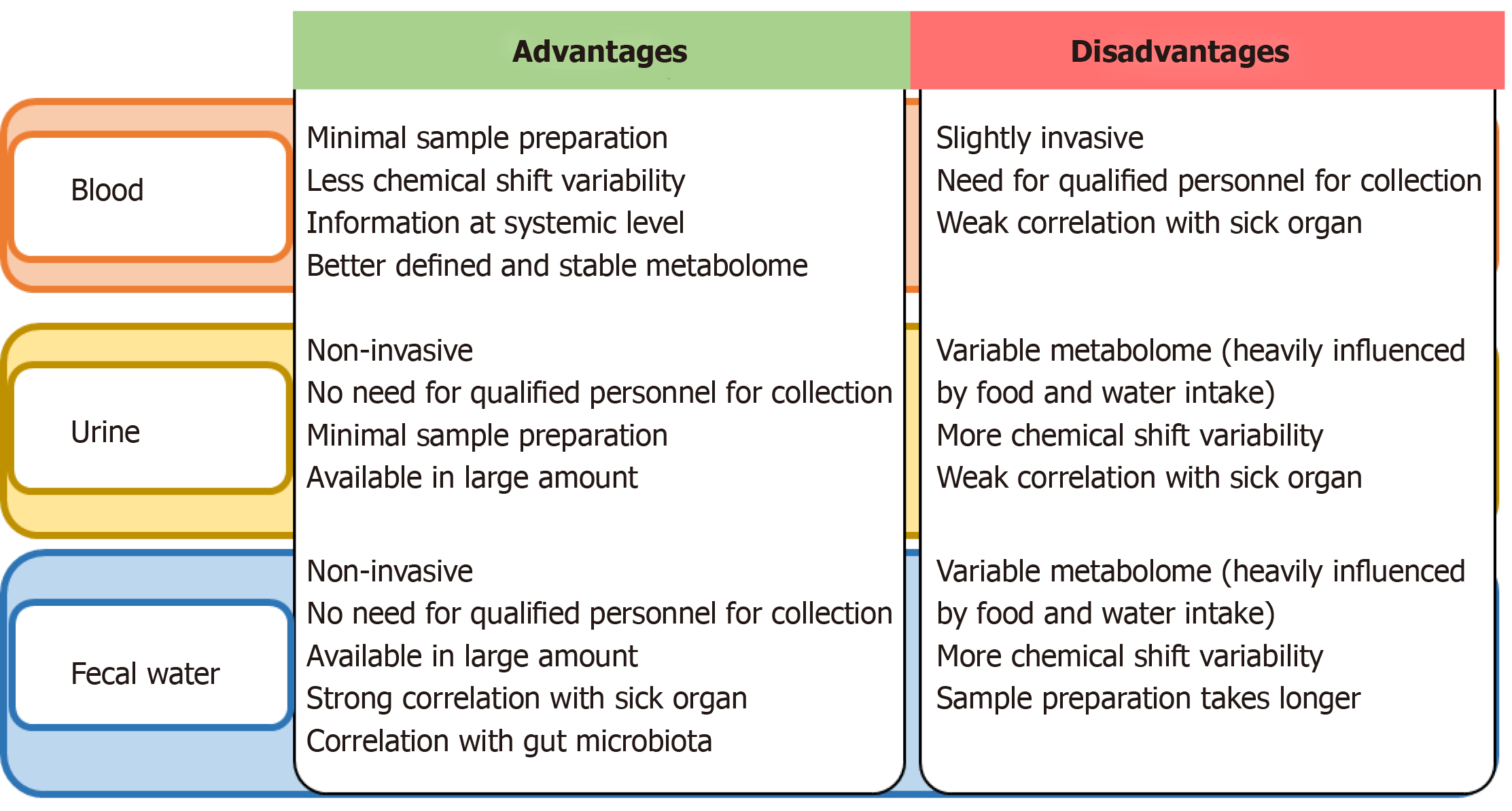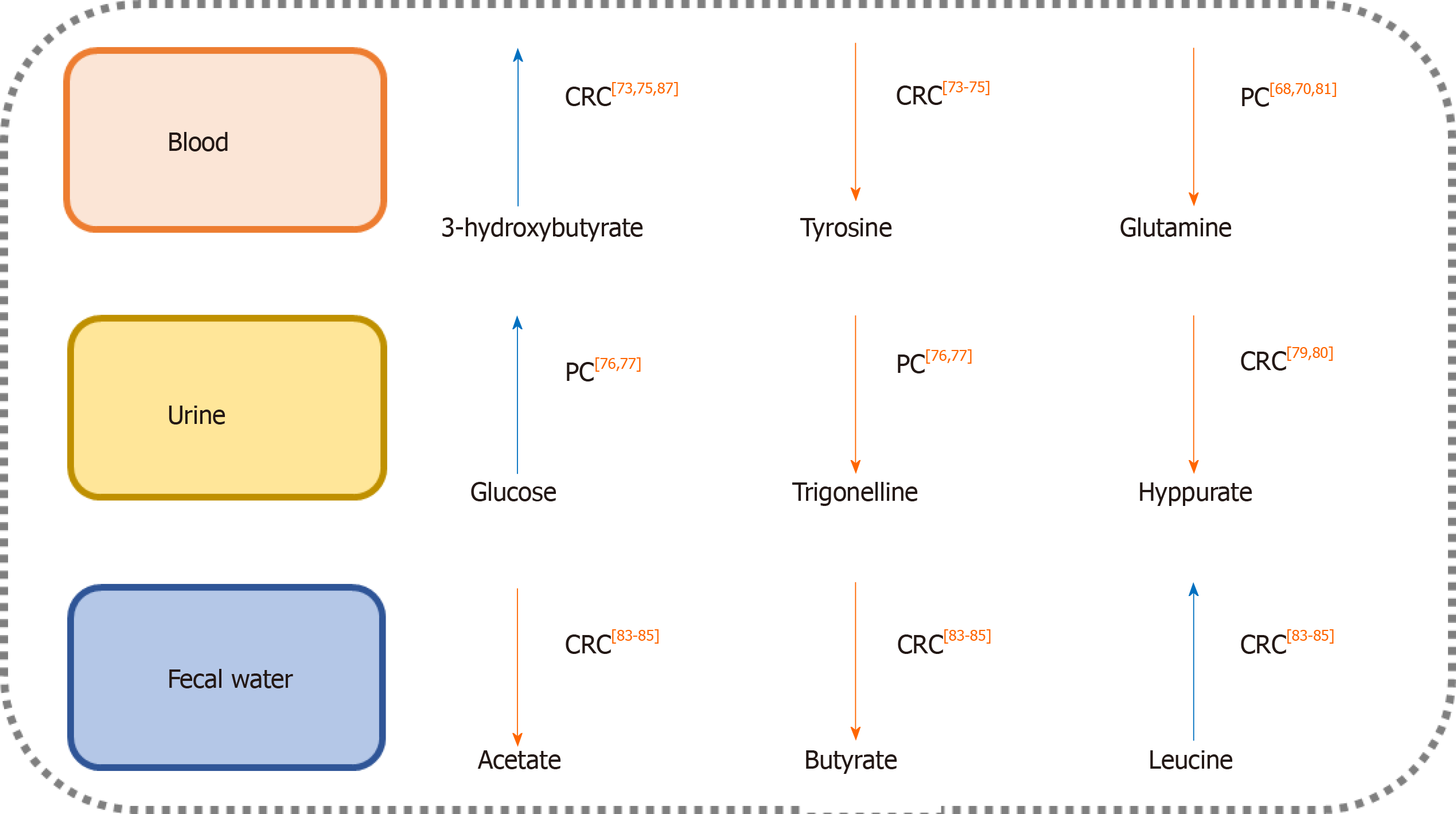Copyright
©The Author(s) 2020.
World J Gastroenterol. May 28, 2020; 26(20): 2514-2532
Published online May 28, 2020. doi: 10.3748/wjg.v26.i20.2514
Published online May 28, 2020. doi: 10.3748/wjg.v26.i20.2514
Figure 1 Selection of discussed nuclear magnetic resonance-based metabolomics review.
The figure shows the study workflow. First, we searched for metabolomic-based studies, then we limited our research to nuclear magnetic resonance-based metabolomic studies and finally we only selected 21 nuclear magnetic resonance-based metabolomic studies on human bio-fluids, in particular blood, urine and fecal water. NMR: Nuclear magnetic resonance.
Figure 2 Summary of the advantages and disadvantages of various bio-fluids.
The figure shows the advantages and disadvantages linked to the use of the three bio-fluids take into consideration for human nuclear magnetic resonance analyses.
Figure 3 Most significant metabolites identified in the 21 studies analyzed.
We have summarized in the outline the most significant metabolites identified in blood, urine and fecal water in the 21 evaluated studies. The green and the red arrows indicate respectively the increase or decrease of the metabolite detected in colorectal cancer or pancreatic cancer in the corresponding references. CRC: Colorectal cancer; PC: Pancreatic cancer.
- Citation: Nannini G, Meoni G, Amedei A, Tenori L. Metabolomics profile in gastrointestinal cancers: Update and future perspectives. World J Gastroenterol 2020; 26(20): 2514-2532
- URL: https://www.wjgnet.com/1007-9327/full/v26/i20/2514.htm
- DOI: https://dx.doi.org/10.3748/wjg.v26.i20.2514















